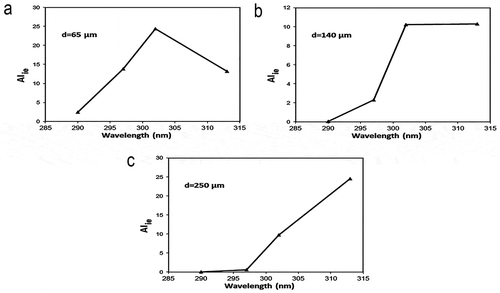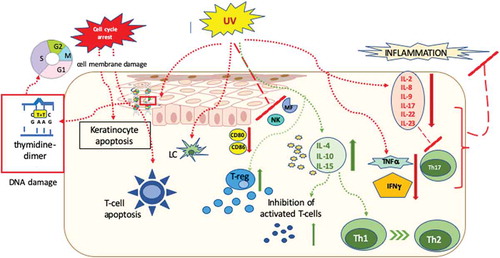Figures & data
Table 1. Phototherapeutical approaches for the treatment of psoriasis and atopic dermatitis.
Table 2. Mechanism of action of UV phototherapy.


